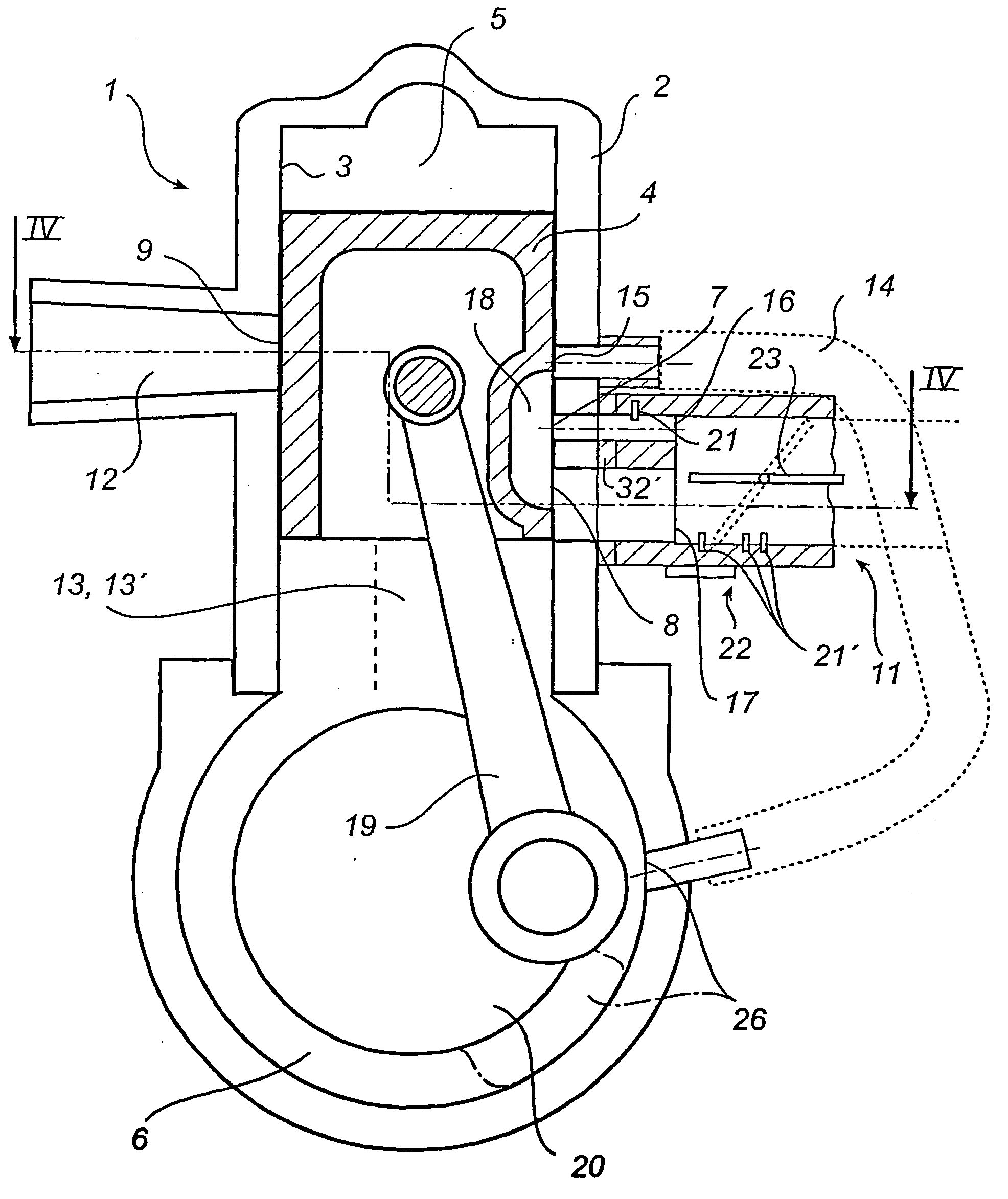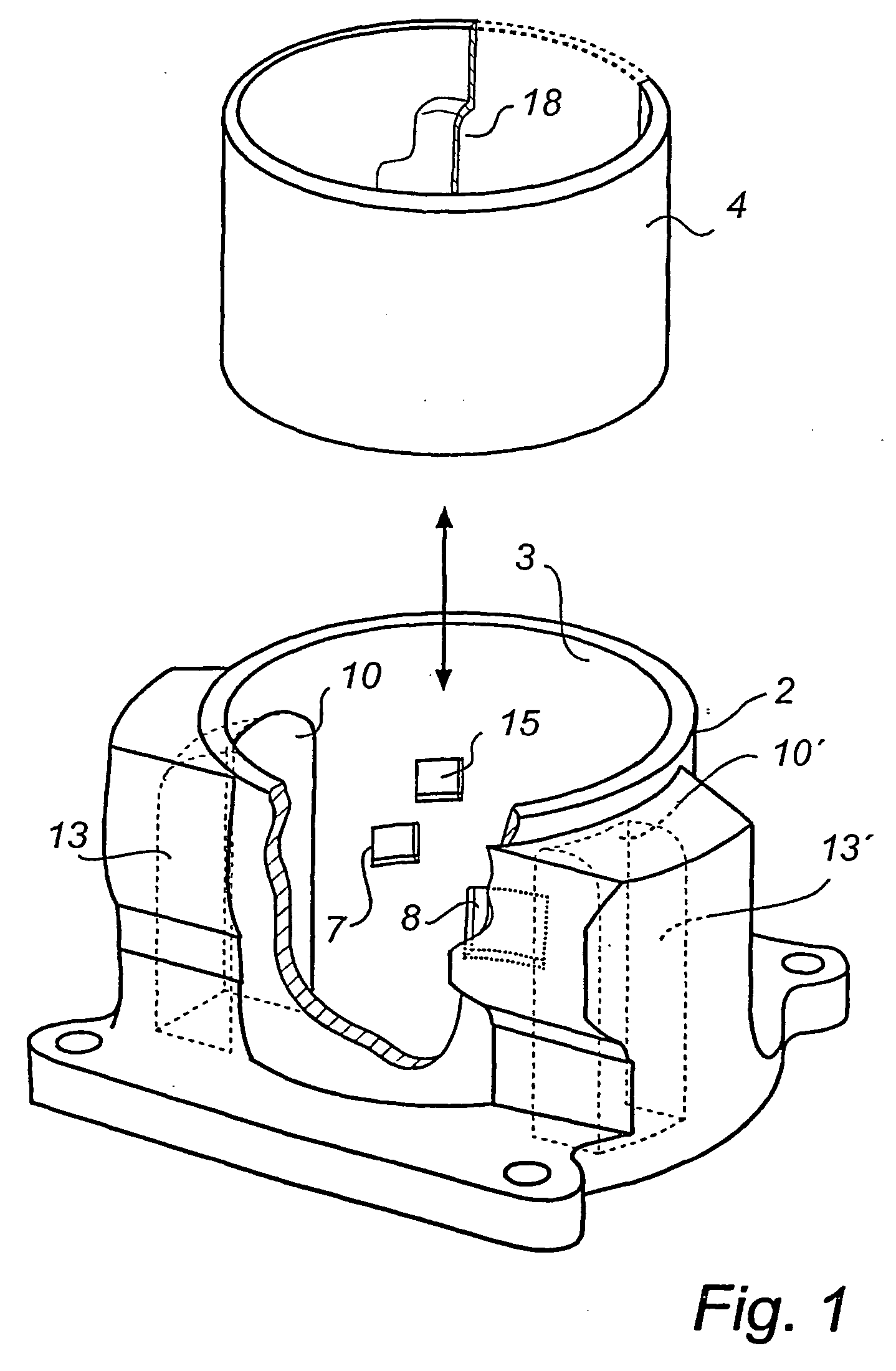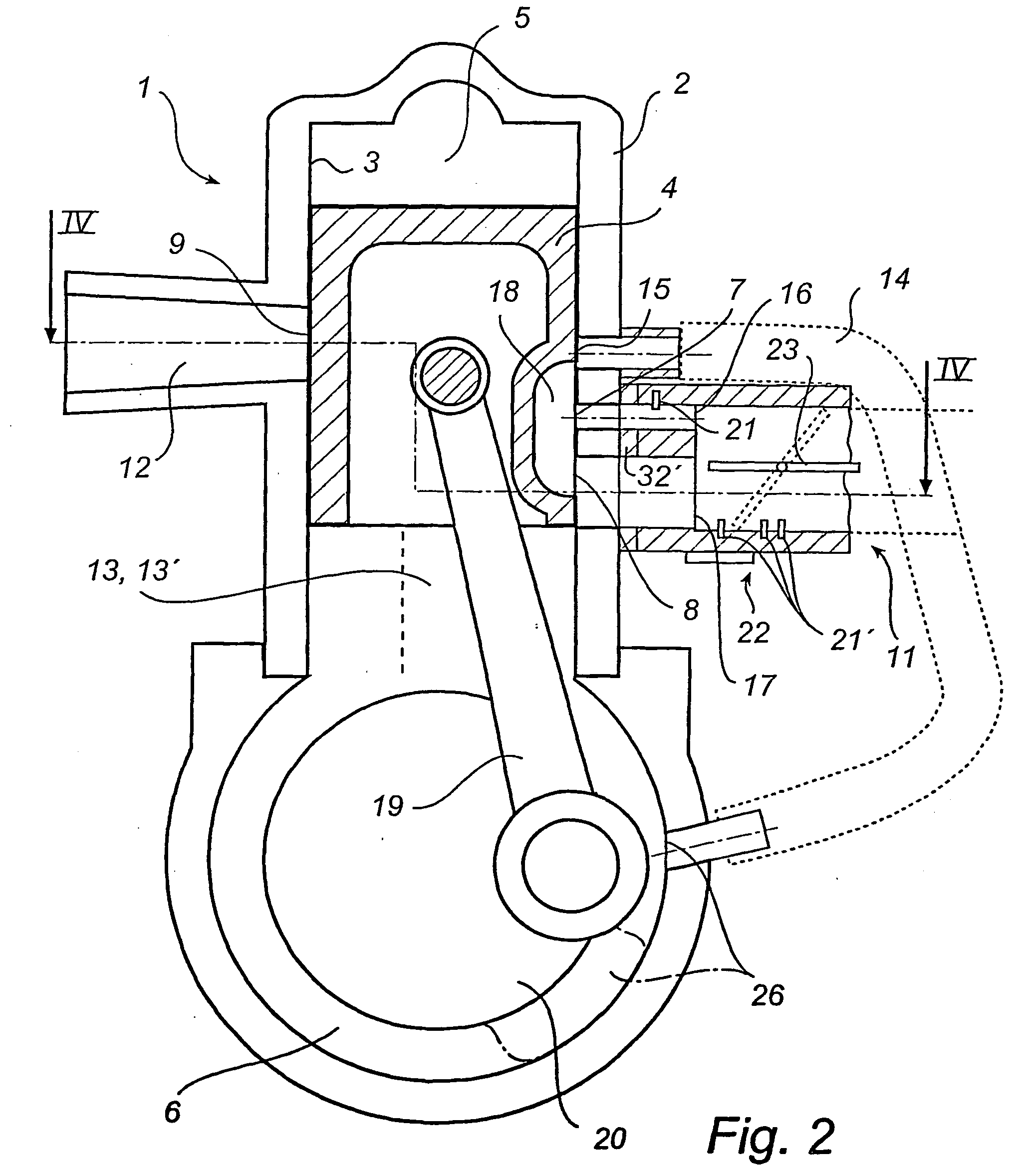Crankcase scavenged internal combustion engine
a crankcase and internal combustion engine technology, applied in the direction of combustion engines, combustion-air/fuel-air treatment, combustion feed systems, etc., can solve problems such as substantial simplification
- Summary
- Abstract
- Description
- Claims
- Application Information
AI Technical Summary
Benefits of technology
Problems solved by technology
Method used
Image
Examples
first embodiment
[0021] With reference to FIGS. 1 and 2 reference numeral 1 designates a crankcase scavenged internal combustion engine according to the invention. It is of two-stroke type and has scavenging ducts 13, 13'. The engine has a cylinder 2 and a crankcase 6, a piston 4 with piston rod 19 and crank mechanism 20. Furthermore, the engine has an inlet 11, which divides into: one fuel inlet 16 leading to a fuel port 7, and one air inlet 17 leading to an air port 8. The denominations fuel inlet and air inlet refers to the general use at high-speed operation.
[0022] The design of the carburetor 22 is shown in closer detail in FIG. 3. At its fuel inlet 17 it has a high-speed nozzle 21. Fuel is thus added by way of a carburetor 22, but could as well be added by way of a fuel injection system, e.g. of low pressure type. A number of low-speed and idle nozzles 21' are arranged in the inlet 11 before it branches. These nozzles are located in connection to the air inlet 17, so that the fuel can be trans...
third embodiment
[0031] With reference to FIG. 5 the ports' location in relation to each other in the cylinder 2 will be further described in the following. As becomes apparent from the figure the ports 7, 8 of the inlet and the port 15 of the auxiliary duct 14 in the cylinder 2 are located side-shifted in relation to each other. The recess 18 must be laterally displaced in relation to the air port 8, so that it is unable to connect the air port 8 with the auxiliary port 15. Consequently, thereby the fuel port 7 and the auxiliary port 15 must be located side-shifted in relation to the air port 8. Otherwise the cylinder bore and stroke would have to be increased. On the other hand the recess 18 should be able to connect the auxiliary port 15 with the fuel port 7. In the shown embodiment the ports 7 and 15 would not have to be side-shifted. However, this is required for the second or the third embodiment according to the FIGS. 11-13, which show a piston opening 31, which shall be able to connect with ...
PUM
 Login to View More
Login to View More Abstract
Description
Claims
Application Information
 Login to View More
Login to View More - R&D
- Intellectual Property
- Life Sciences
- Materials
- Tech Scout
- Unparalleled Data Quality
- Higher Quality Content
- 60% Fewer Hallucinations
Browse by: Latest US Patents, China's latest patents, Technical Efficacy Thesaurus, Application Domain, Technology Topic, Popular Technical Reports.
© 2025 PatSnap. All rights reserved.Legal|Privacy policy|Modern Slavery Act Transparency Statement|Sitemap|About US| Contact US: help@patsnap.com



